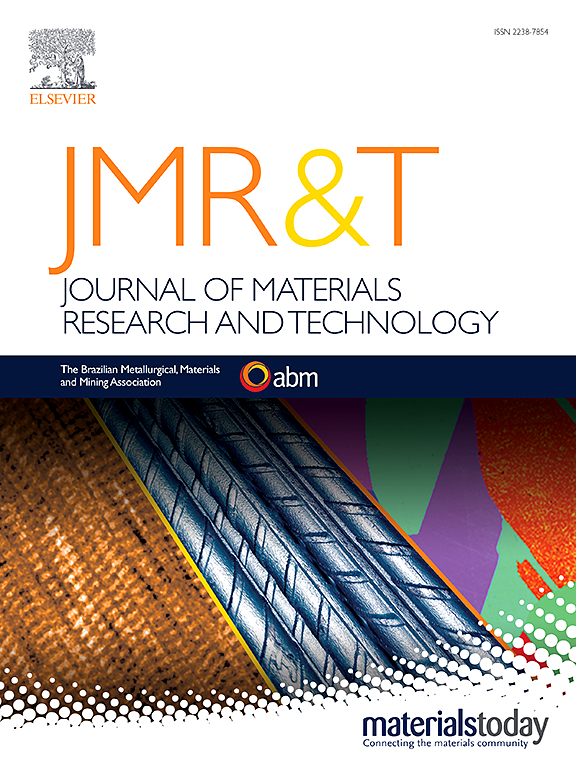Effect of heat treatment on microstructure and properties of hybrid manufacturing TC4 alloy bonding zone
IF 6.2
2区 材料科学
Q1 MATERIALS SCIENCE, MULTIDISCIPLINARY
Journal of Materials Research and Technology-Jmr&t
Pub Date : 2025-01-01
DOI:10.1016/j.jmrt.2024.12.088
引用次数: 0
Abstract
Samples were deposited on the casting matrix of TC4 titanium alloy by arc fuse additive manufacturing technology. The effects of different heat treatments on the microstructure and properties of the bonding zone of the hybrid manufacturing sample were studied. Meanwhile, the corrosion resistance of different regions of the sample after heat treatment was studied. The results show that with the increase of annealing temperature, the α phase in the binding zone has a certain degree of coarsening, and the acicular martensite α 'phase at the top of the binding zone decomposes. At the same time, the yield strength reached 882.4 MPa when the annealing temperature is 800 °C. After solution aging treatment at 950 °C/1h/AC (Air Cooling)+600 °C/4h/AC, the non-uniformity of the structure of the bonding zone is improved, and the yield strength above 800 MPa is maintained at the highest post-fracture elongation of 8.6%, which demonstrates a good comprehensive performance. On the other hand, after 950 °C/1h/AC+600 °C/4h/AC solution aging treatment, the fusing of the continuous α phase and the decomposition of the acicular martensite α′ phase led to an improvement in the corrosion resistance of the bonding zone. At the same time, the improvement in the microstructure heterogeneity between different regions reduces the difference of corrosion resistance in different regions of TC4 titanium alloy components to a certain extent.
求助全文
约1分钟内获得全文
求助全文
来源期刊

Journal of Materials Research and Technology-Jmr&t
Materials Science-Metals and Alloys
CiteScore
8.80
自引率
9.40%
发文量
1877
审稿时长
35 days
期刊介绍:
The Journal of Materials Research and Technology is a publication of ABM - Brazilian Metallurgical, Materials and Mining Association - and publishes four issues per year also with a free version online (www.jmrt.com.br). The journal provides an international medium for the publication of theoretical and experimental studies related to Metallurgy, Materials and Minerals research and technology. Appropriate submissions to the Journal of Materials Research and Technology should include scientific and/or engineering factors which affect processes and products in the Metallurgy, Materials and Mining areas.
 求助内容:
求助内容: 应助结果提醒方式:
应助结果提醒方式:


